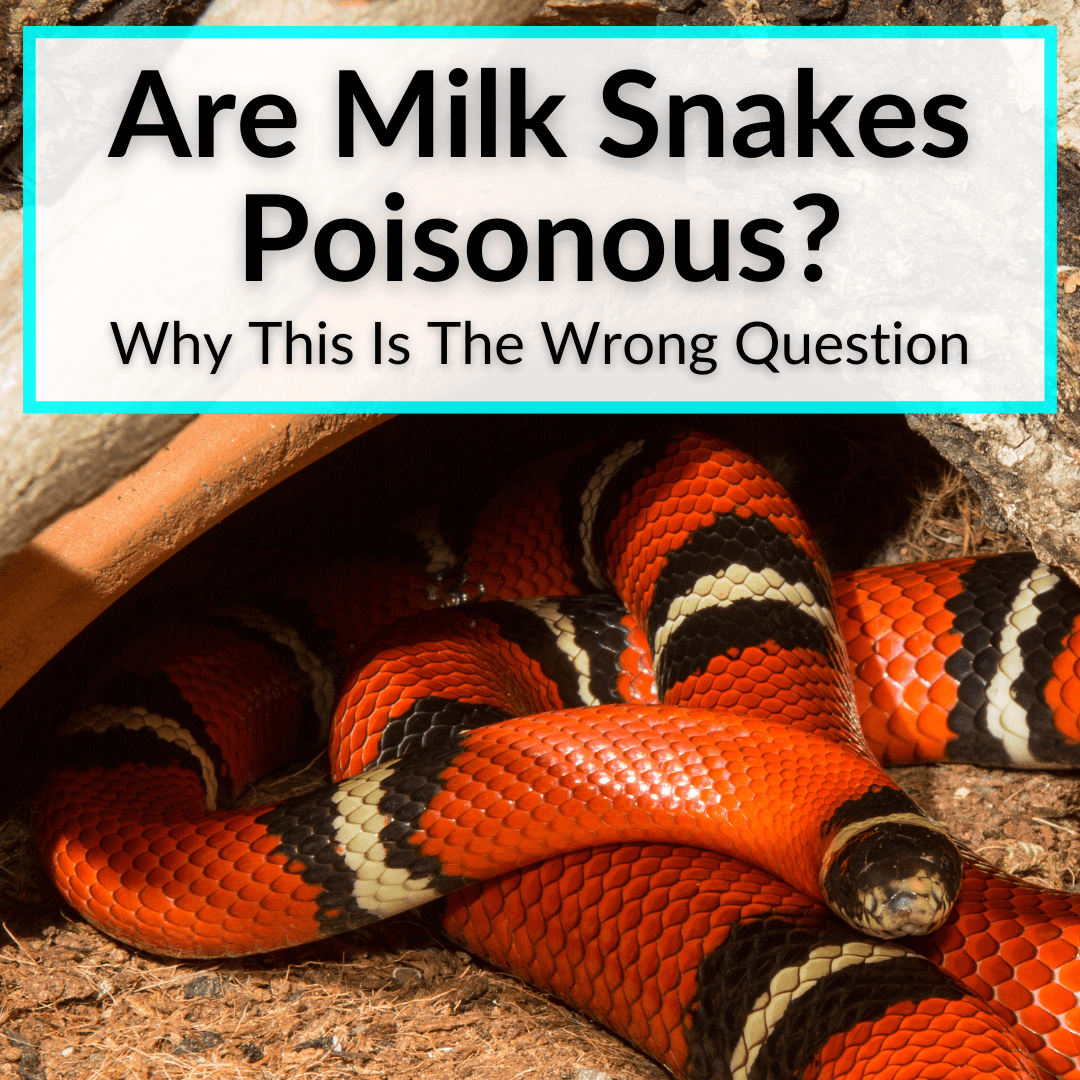
People commonly ask: are milk snakes poisonous?
But that is the wrong word.
Snakes are not poisonous. They are venomous.
Poisonous refers to you ingesting a toxin, while venomous refers to the toxin being injected into you.
That is what snakes do.
But do milk snakes do it. Are they venomous?
Keep reading to learn whether milk snakes are venomous and if they pose any danger to us. We’ll also discuss why so many people are worried about milk snakes being venomous.
Are Milk Snakes Poisonous?
No, milk snakes are not poisonous. Or venomous. They are completely harmless. However, they resemble poisonous coral snakes (and sometimes even copperheads), because they can have the same coloring as these snakes.
Predators often leave milk snakes alone because they see their colors and believe they are their more venomous look-alikes. On the other hand, humans often kill them for the same reason.
That is a shame, because milk snakes make great pets. They are docile and easy to tame. They also make popular pets because of their bright colors. They mostly sport red, black, and yellow (or white) bands all over their body.
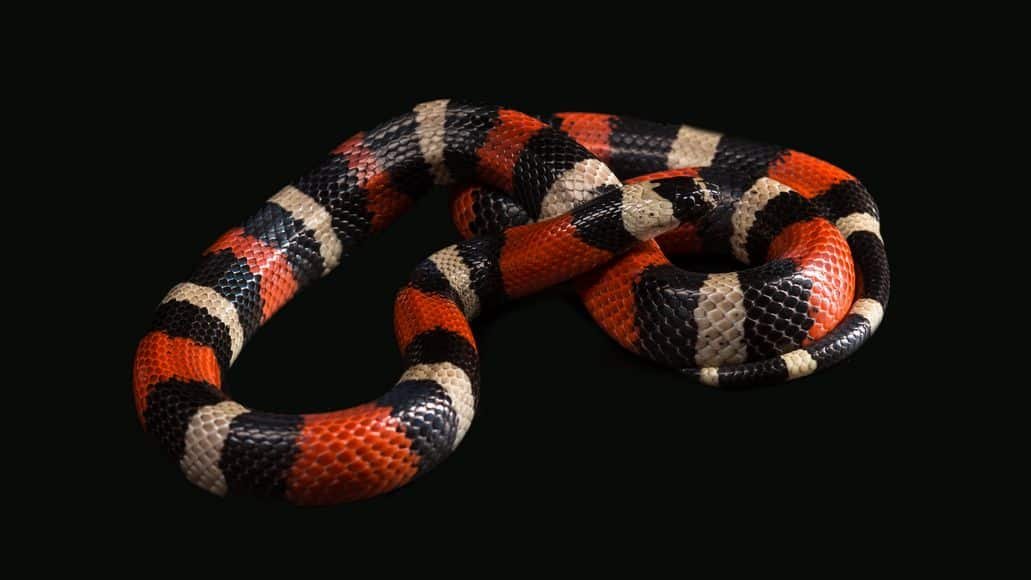
While snake owners like to keep milk snakes as pets because of their docile natures, and them being easy to care for, a lot of people fear all snakes, because some species are venomous.
And milk snakes do resemble one of the most venomous snakes in North America. But again, milk snakes are neither poisonous nor venomous. They are completely harmless. When they feel threatened, they choose to hide instead of attacking or showing aggression.
The Nonvenomous Milk Snake
Milk snakes are a type of king snake. And like all king snakes, they are constrictors. This means they constrict their prey so it cannot breathe.
For that reason, milk snakes do not have to make use of their teeth to inject venom. They simply coil around their victims’ bodies to prevent them from breathing. Once the prey is lifeless, they eat it.
Fear not: milk snakes are neither long nor strong enough to coil around humans. They primarily target small mammals, rodents, lizards, birds, and other snakes for food. In fact, they even eat poisonous snakes and are equipped to handle the venom of those snakes.
Even though they are 100% nonvenomous, the docile milk snake is not helpless in the wild. Nature has given this species an excellent natural defense mechanism, in that it closely resembles many deadly and venomous snakes including copperheads and coral snakes. Therefore, predators leave milk snakes alone, thinking they are venomous as well.
Like coral snakes, milk snakes have a similar coloring of red, white/yellow, and black bands. The only difference between coral and milk snakes is that in coral snakes, the red and yellow rings touch each other whereas, in milk snakes, the red and yellow/white bands are separated by black colored bands.
The fact that milk snakes look so attractive and are completely docile while also being nonvenomous makes them one of the best snakes to keep as pets.
The Friendly Milk Snake
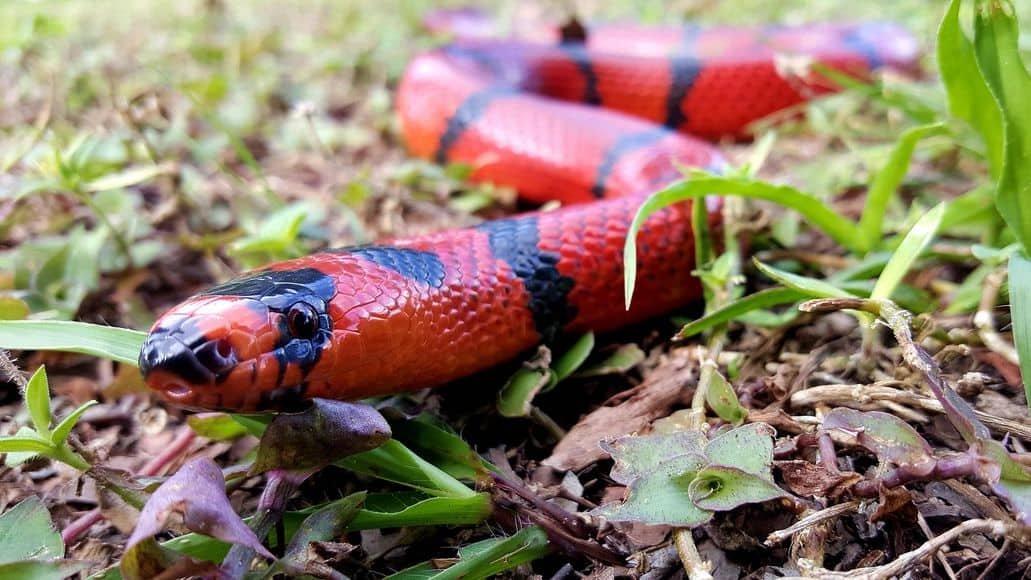
Milk snakes are one of the best choices for pet snakes due to their friendly nature. The fact that they have attractive and bright colors enhances their allure as a pet.
Furthermore, they are docile, non-aggressive, and easy to tame. They are also low maintenance and easy to care for. This makes them great pets for newbie snake owners.
Milk snakes even live up to 20 years, so they become a great companion for years!
If you plan on keeping a milk snake as a pet, please remember that although it is nonvenomous, it still is a carnivore. Your pet milk snake will need meat in the form of mice and lizards. If you’re squeamish about that, you should look for another pet.
Also, milk snakes are known to eat each other, so it is important to keep them solitary. If you plan on keeping more than one milk snake, you should keep them in separate enclosures.
Do Milk Snakes Bite?
Yes, if a milk snake feels threatened, it could bite. However, its bite is not painful, nor is it dangerous to humans. After all, milk snakes do not have fangs and their teeth are tiny. They won’t hurt you and cannot even pierce your skin.
Also, most milk snake bites occur because the snake wants to warn you off and not injure you. To that end, their bite is usually very quick and does not leave puncture wounds.
However, some larger species of milk snakes could cause bites that result in mild swelling, numbness, and pain. If your pet milk snake has bitten you, please clean the wound with warm water and soap and apply an antiseptic cream or lotion. The swelling and pain should subside in a few days.
Milk Snake Size
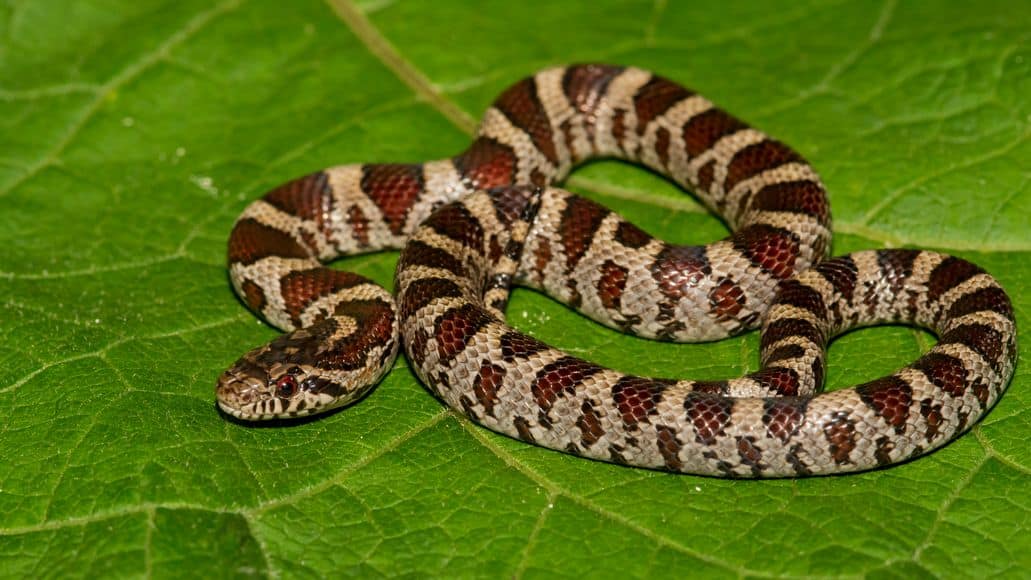
Milk snakes usually measure between 1.1 ft to 5.7 ft (35 to 175 cm). A few specimens have been known to measure over 6 feet, but they are exceedingly rare.
Because of their small size, they cannot kill a human being through their constriction mechanism. And since they do not have fangs or venom, they are completely harmless.
Also, milk snakes prefer hiding to attacking or striking. This ensures that they are of no significant threat to their owners.
The Origin Of The Name
In the old days, Louisiana farmers believed that milk snakes were responsible for their cows’ milk drying up. The misunderstood milk snakes would enter barns and cow sheds to eat mice and rodents that invariably lived in these facilities.
Coincidentally, the cows began producing less milk and the farmers attributed this to the snakes. They thought that the milk snakes ‘milked’ their cows dry during the night.
Today, we know that snakes do not drink milk since their digestive system lacks the enzymes needed for assimilating lactose. However, the name has still stuck.
In many cultures, people still offer milk to snakes. Snakes rely on their tongues for getting information about their surroundings, so they flick them out constantly to smell and taste.
This gives people the impression that a snake drinks the milk placed before it, but it is simply flicking its tongue out and not drinking the offering.
How To Identify Milk Snakes
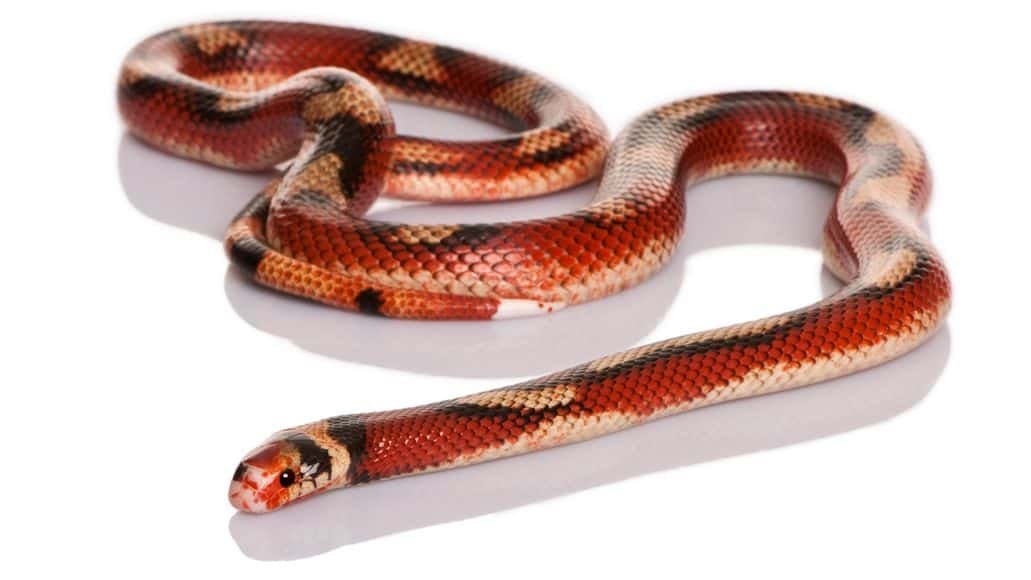
Here are the features to look out for when identifying a milk snake. They will help you distinguish between milk snakes, king snakes, and coral snakes, their venomous look-alikes.
Scales
Since milk snakes belong to the Lampropeltis genus, they have smooth and shiny scales. The Greek word Lampropeltis means ‘bright shield’, and milk snakes have shiny and bright scales.
Anal Plate
Milk snakes have single anal plates following the 19 to 23 rows of smooth scales. The anal plate is the scale in front of the cloacal opening.
Body Shape
Milk snakes have slender to moderately robust body shapes. Their head is narrow and only slightly wider at the base than the neck.
Patterns And Colors
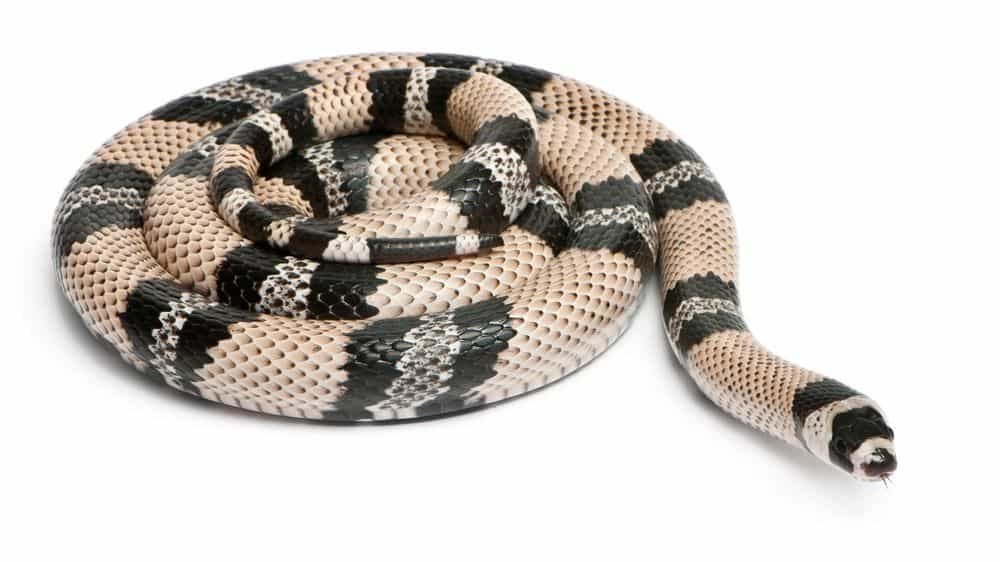
Most varieties of milk snake have alternating bands of red-black-yellow or red-black-white.
The Louisiana milk snake is ringed completely around its body with red, yellow, and black bands. Eastern milk snakes are light brown to grey with red-brown blotches down their backs.
Many varieties of milk snakes are lighter in color with darker reddish or brown blotches down the back and on the sides. Milk snakes also have a “V”, “U” or “Y” shaped blotch on the back of the head.
The nose of the eastern milk snake is white, whereas the Louisiana milk snake has a distinct black nose.
Pupils
Milk snakes have round pupils whereas most venomous snakes have elliptical or slit pupils.
Are Milk Snakes Venomous: Final Thoughts
Milk snakes are no poisonous or venomous. They do not have fangs. All they have are small teeth that can’t even break our skin, unless the snake in question is unusually large. even then, it poses no real danger, apart from a possible infection.
However, milk snakes resemble coral snakes, which are highly venomous. It is for this reason that many people are worried about milk snakes. But there is no need to be. They are actually one of the most docile snakes and make for great pets as a result.
Leave a Reply